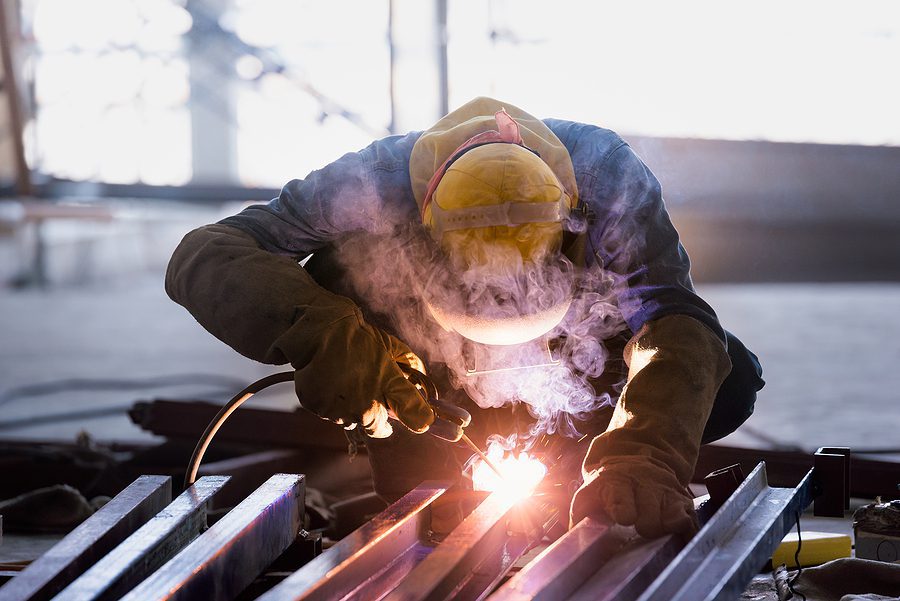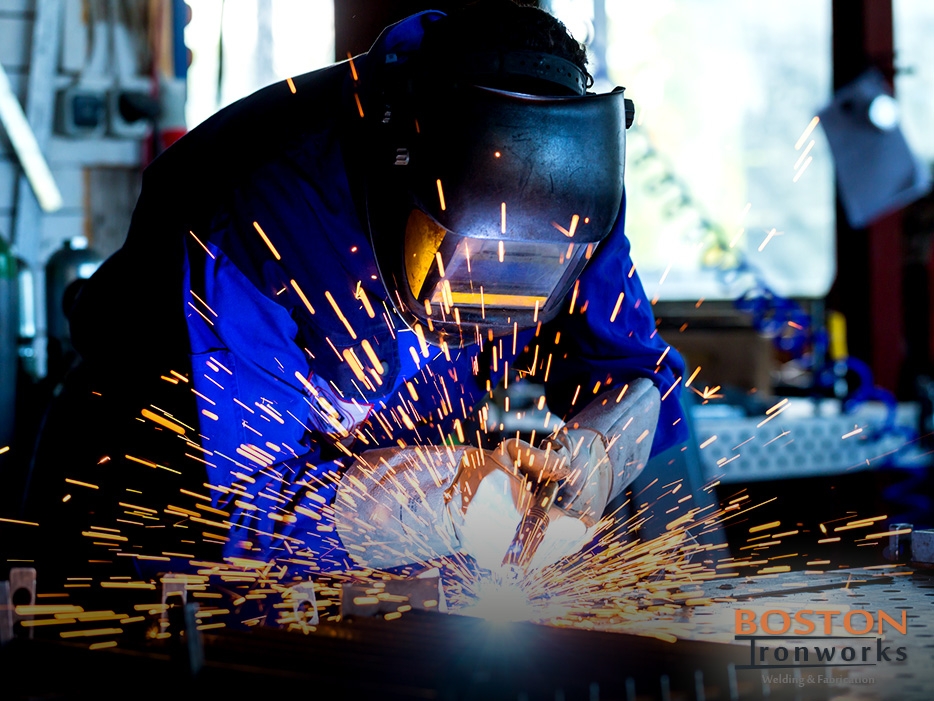Usual Welding Repair Work Issues and How to Address Them Efficiently
Welding repairs usually run into a series of issues that can threaten the honesty of the end product. Usual troubles consist of inadequate penetration, porosity, and misalignment, to name a few. Each flaw offers special obstacles that need certain methods for resolution. Understanding these issues is vital for welders aiming to enhance their outcomes and skills. This conversation will certainly check out these common welding repair service problems and efficient methods to address them.
Poor Infiltration
Inadequate infiltration takes place when the weld metal stops working to totally fuse with the base material, resulting in weak joints and possible structural failures. This problem usually stems from not enough warm input, inaccurate electrode angle, or incorrect welding speed. Welders might come across insufficient infiltration as a result of a mistake of the required parameters for a specific product density or kind. Furthermore, contamination on the base material's surface area can impede reliable bonding, aggravating the trouble. To deal with inadequate penetration, welders need to assure appropriate setups on their devices and keep a clean job surface. Normal inspection of welds is suggested to identify any kind of shortages early, permitting for timely improvements and the prevention of jeopardized structural integrity in bonded settings up.
Porosity
Porosity is a common flaw in bonded joints that shows up as small gas bubbles trapped within the weld steel. This issue can compromise the stability of the weld, leading to reduced strength and prospective failing under tension. Belgrade. Porosity normally develops from contamination, wetness, or improper welding strategies, which enable gases to escape into the liquified weld swimming pool. To resolve porosity, welders must ensure proper surface area preparation, preserve a tidy workplace, and use ideal welding specifications. Additionally, selecting the right filler material and protecting gas can mitigate gas entrapment. Normal evaluation and testing of welds can assist recognize porosity early, ensuring prompt restorative activities are taken, therefore maintaining the quality and reliability of the welded framework
Imbalance
Misalignment in welding can arise from various elements, consisting of improper arrangement and thermal expansion. Comprehending the root creates is crucial for effective resolution. Several correction strategies are readily available to straighten parts and ensure structural integrity.
Causes of Imbalance
Welding imbalance usually originates from a range of underlying concerns that can endanger architectural stability. One primary cause is incorrect fit-up of elements before welding, which can bring about spaces and irregular surface areas. Variations in thermal expansion throughout the welding procedure can also result in distortion, especially if the materials being joined have various coefficients of expansion. Furthermore, insufficient clamping and fixturing might stop working to hold parts safely in position, bring about motion throughout welding. Inadequately conserved tools, consisting of welding makers and tools, might present incongruities in the weld grain, further adding to imbalance. Driver mistake, stemming from insufficient training or experience, can additionally play a considerable duty in creating misaligned welds.

Improvement Techniques Available
Resolving misalignment efficiently requires a mix of corrective methods tailored to the specific problems available. One usual technique is using fixtures or jigs to hold parts in the correct placement throughout welding, guaranteeing constant positioning. Furthermore, pre-heating the products can aid decrease distortion and improve fit-up. For considerable imbalance, mechanical adjustment techniques, such as using hydraulic jacks or clamps, can be utilized to remedy the setting prior to welding. Post-weld warmth therapy may likewise be required to alleviate tensions triggered by misalignment. Careful evaluation and change during the arrangement stage can stop imbalance issues from becoming significant issues, promoting a smoother welding process and improving total architectural honesty.
Distortion
Distortion is a common obstacle in welding that can emerge from different factors, consisting of unequal heating & cooling. Understanding the root causes of distortion is important for executing efficient avoidance strategies. Resolving this concern not only improves structural integrity but likewise boosts the overall quality of the weld.
Reasons for Distortion
When subjected to the intense heat of welding, materials often undertake adjustments that can lead to distortion. This sensation primarily develops from thermal expansion and contraction during the welding process. As the weld location heats up, the material broadens; upon air conditioning, it contracts, which can produce internal tensions. In addition, unequal heating across a work surface can exacerbate these stress and anxieties, resulting in warping or flexing. The sort of product also plays a substantial role; steels with differing thermal conductivity and coefficients of growth may respond in different ways, leading to unforeseeable distortions. Moreover, bad joint layout and inadequate fixturing can add to misalignment during welding, increasing the possibility of distortion. Understanding these causes is important for reliable welding repair service and prevention approaches.
Avoidance Techniques
Efficient prevention strategies for distortion throughout welding concentrate on controlling warm input and ensuring appropriate joint design. Maintaining a consistent warmth input helps to minimize thermal development and contraction, which can result in distortion. Utilizing strategies such as preheating the workpiece can likewise minimize the temperature level gradient, advertising uniform heating. In addition, selecting appropriate joint designs, such as T-joints or lap joints, can improve security and reduce tension focus. Executing correct fixturing to safeguard the work surfaces in position better help in keeping alignment throughout the welding procedure. Staggered welding series can distribute warm more evenly, preventing localized distortion. By using these strategies, welders can greatly lower the probability of distortion and boost the overall quality of their welds.
Splitting
Splitting is a common problem experienced in welding repair work, commonly resulting from numerous aspects such as incorrect air conditioning prices, product selection, or poor joint prep work. The incident of cracks can significantly endanger the honesty of the weld, resulting in possible failures during procedure. To address this welding face shield concern, welders must first evaluate the origin, making certain that products are compatible and suitably chosen for the certain application. Additionally, regulating the air conditioning rate during the welding procedure is important; rapid cooling can induce stress and cause splitting. Appropriate joint design and prep work likewise add to lessening the danger. Executing these methods can improve weld high quality and sturdiness, eventually lowering the probability of breaking in ended up weldments.

Insufficient Blend
A substantial issue in welding repair services is incomplete blend, which takes place when the weld metal does not properly bond with the base product or previous weld passes - Montana Mobile Welding and Repair Belgrade Fabrication. This issue can cause weak points in the joint, possibly compromising the honesty of the bonded structure. Elements contributing to incomplete blend include inadequate warm input, improper welding technique, and contamination of the surfaces being joined. To address this concern effectively, welders ought to assure correct pre-weld cleansing and surface area prep work, as well as readjust their welding parameters to accomplish appropriate penetration and combination. Normal assessment throughout the welding process can also help identify incomplete blend early, enabling timely rehabilitative procedures to improve the general high quality of the weld
Overheating
While welding repair services can boost architectural integrity, overheating provides a significant obstacle that can bring about material destruction. Extreme heat throughout welding can alter the mechanical properties of steels, leading to minimized toughness, increased brittleness, and warping. This sensation is particularly crucial in high-stress applications where architectural dependability is critical. Recognizing getting too hot can entail aesthetic evaluations for discoloration or distortion, in addition to monitoring temperature level throughout the welding procedure. To minimize the dangers connected with getting too hot, welders ought to utilize appropriate techniques, such as managing heat input, readjusting traveling rate, and utilizing ideal filler materials. In addition, carrying out pre- and post-weld warm treatments can assist restore product homes and enhance the overall top quality of the repair service, making sure lasting efficiency and security.
Frequently Asked Questions
What Are the Common Signs of a Welding Problem?

Just How Can I Examine My Welds for Top quality?
To test welds for high quality, one can make use of visual assessments, ultrasonic testing, and radiographic methods. Each technique guarantees architectural honesty, recognizes issues, and verifies adherence to specified requirements, eventually enhancing additional resources the integrity of the bonded joints.
What Safety Preventative Measures Should I Take While Welding?
When welding, one should focus on safety by wearing appropriate individual safety equipment, making sure correct air flow, safeguarding combustible products away, maintaining a clean workspace, and understanding environments to avoid injuries and mishaps.
Can I Fix a Weld Without Renovating the Entire Joint?
Repairing a weld without redesigning the entire joint is possible, depending on the damages (Welding). Strategies such as grinding, including filler material, or making use of a welding process can properly attend to certain problems while maintaining the surrounding structure
What Equipment Are Essential for Reliable Welding Repair Works?
Vital tools for reliable welding fixings include a welding device, cord brush, mill, safety equipment, clamps, and filler products. Each device plays a vital function in ensuring high quality and safety throughout the repair service procedure. Porosity usually arises from contamination, wetness, or inappropriate welding strategies, which enable gases to escape right into the liquified weld swimming pool. Poorly maintained devices, including welding makers and helpful hints tools, might present inconsistencies in the weld bead, further contributing to imbalance. When subjected to the intense warm of welding, materials usually undertake changes that can lead to distortion. Breaking is an usual issue run into in welding repairs, typically resulting from various variables such as improper cooling rates, product option, or poor joint preparation. A significant issue in welding repair work is insufficient combination, which happens when the weld metal does not properly bond with the base product or previous weld passes.
Comments on “Top welding defects Montana Mobile Welding and Repair Belgrade Welding helps eliminate”